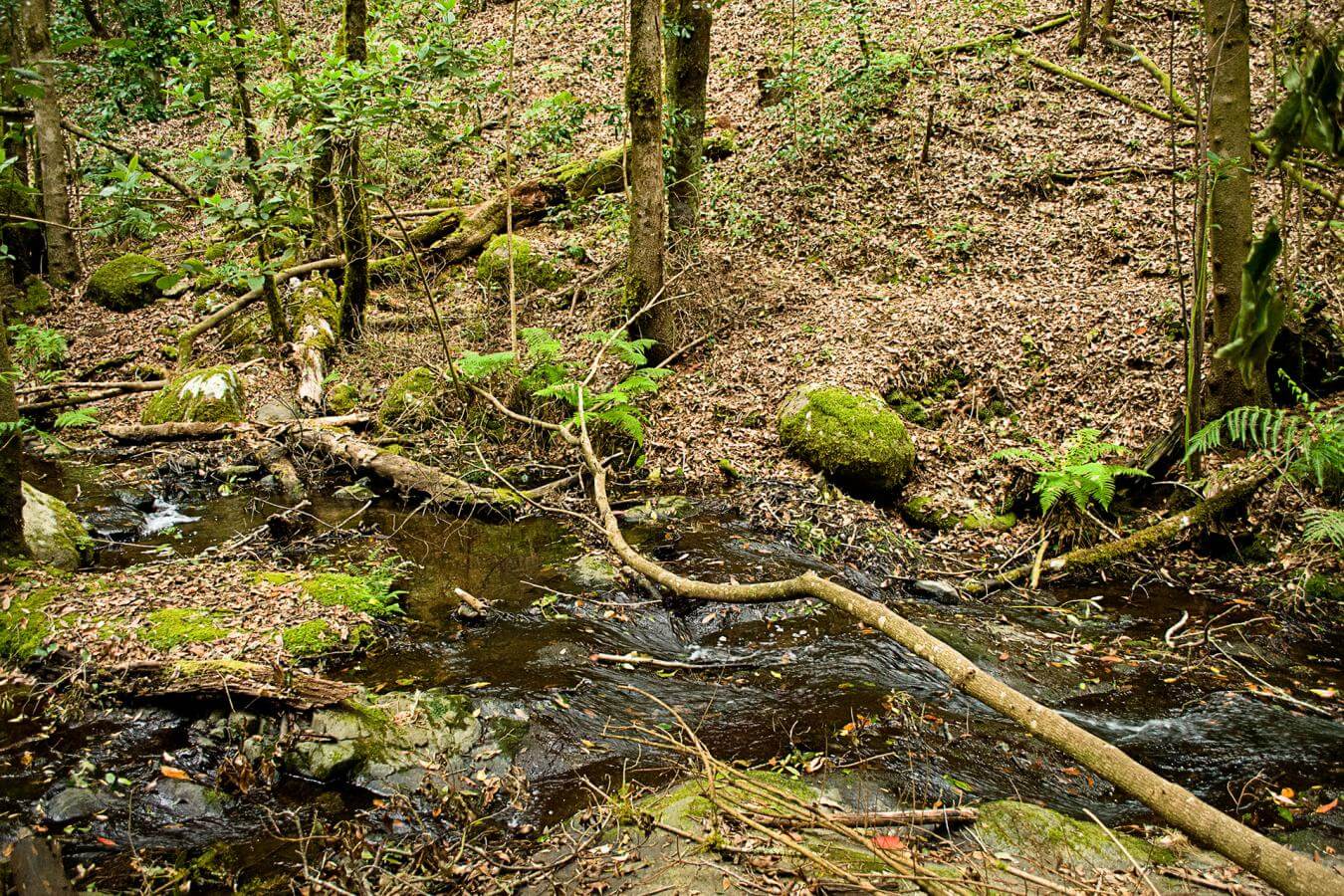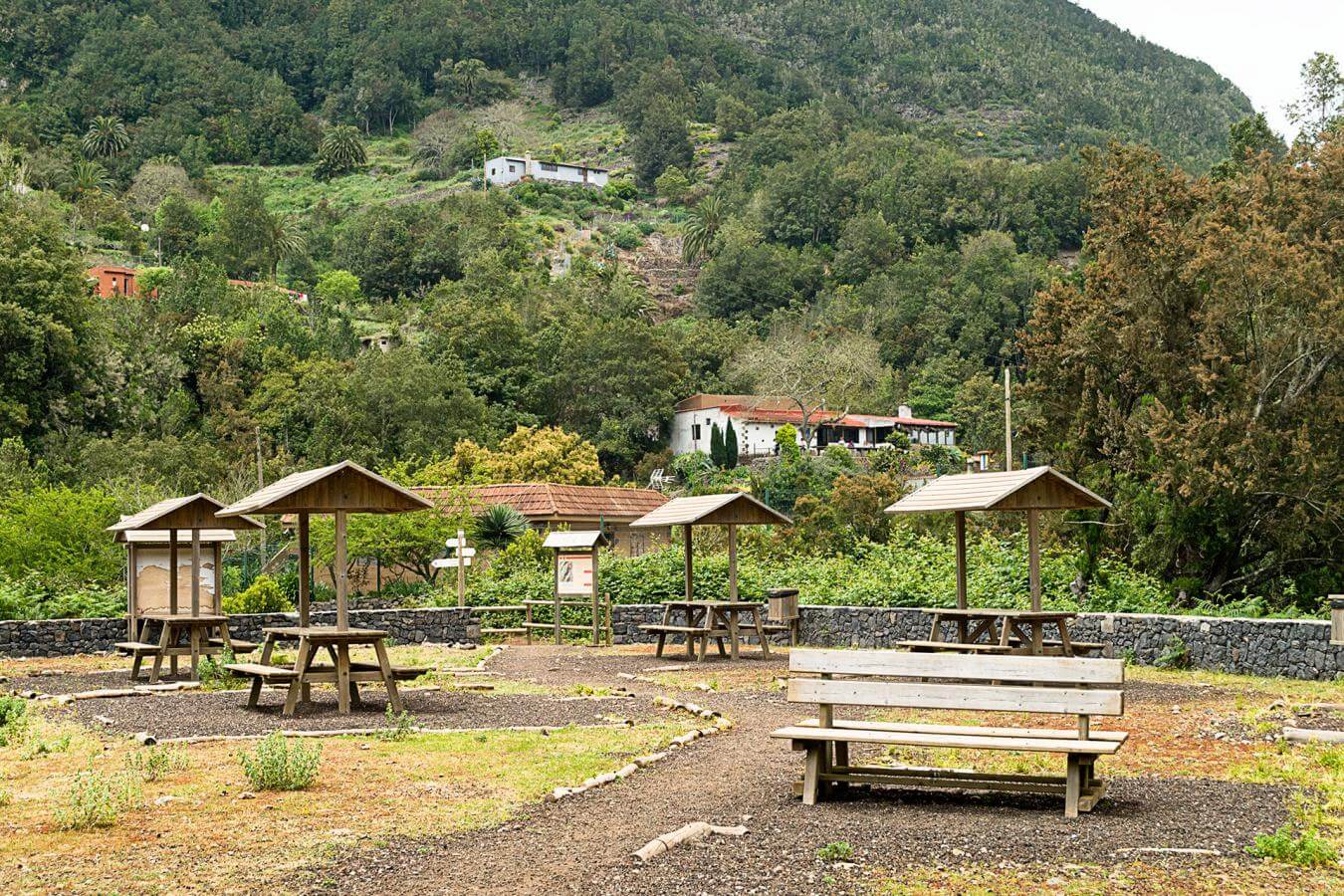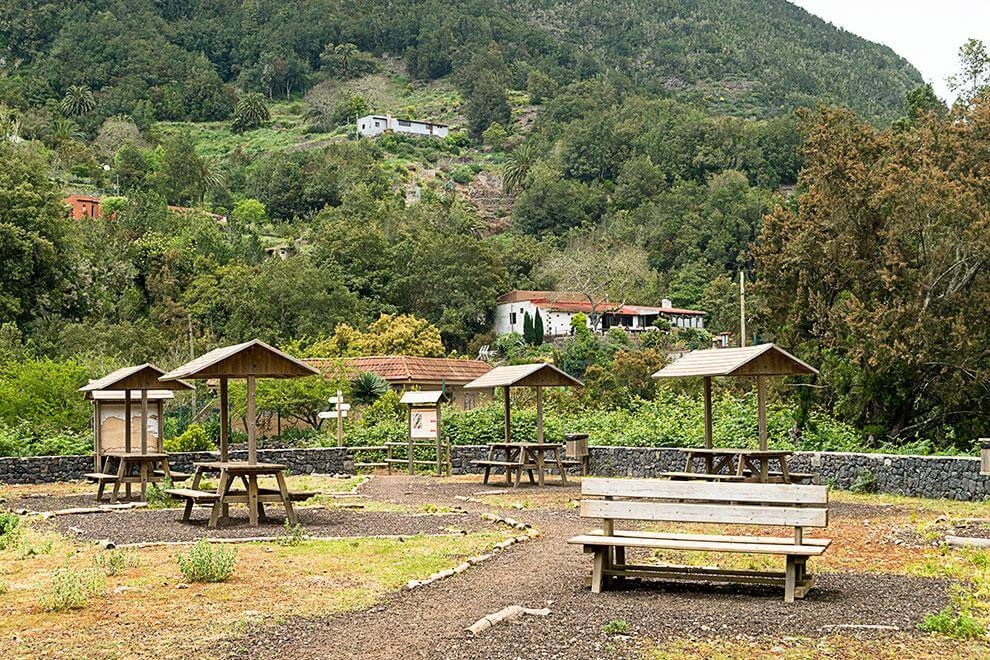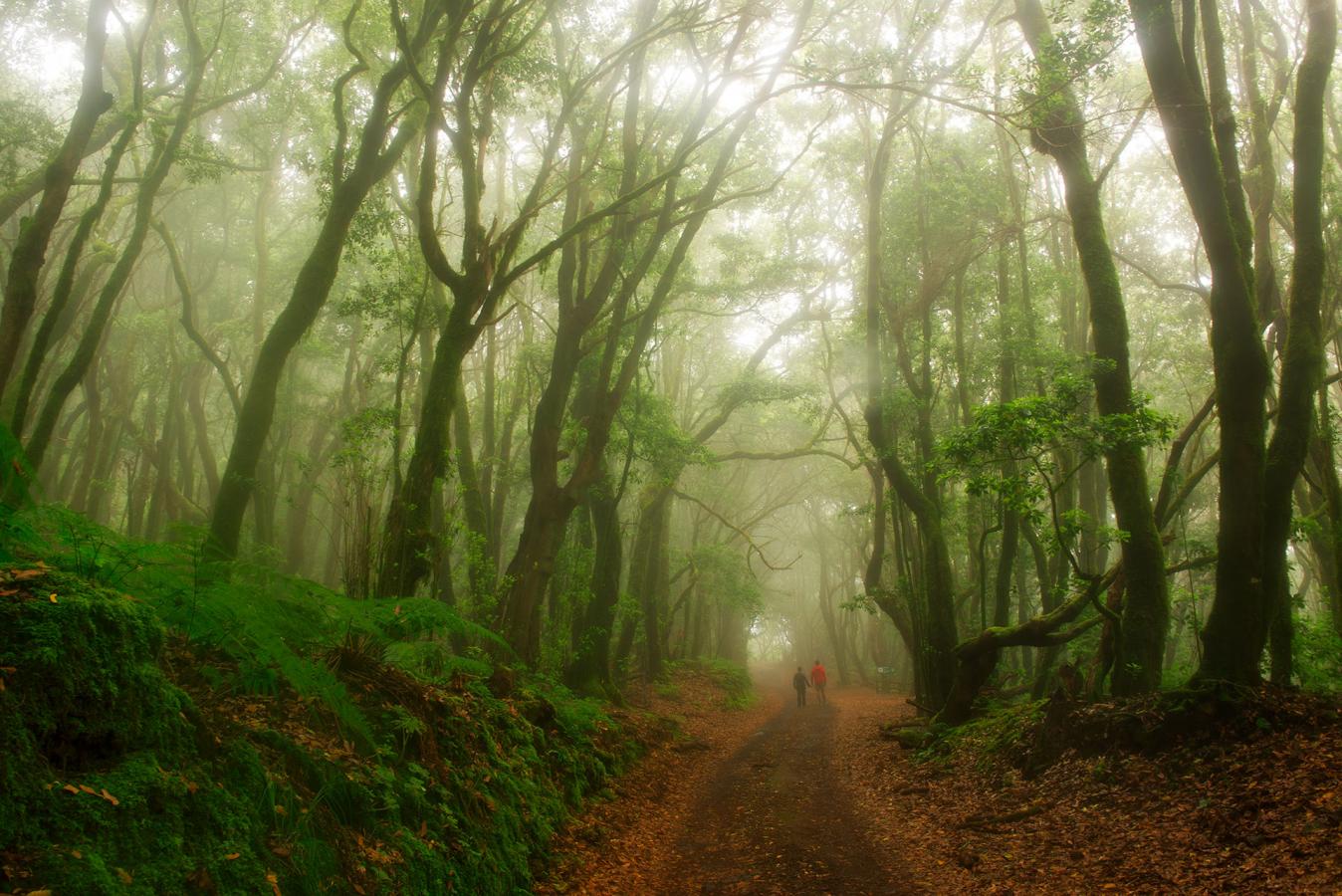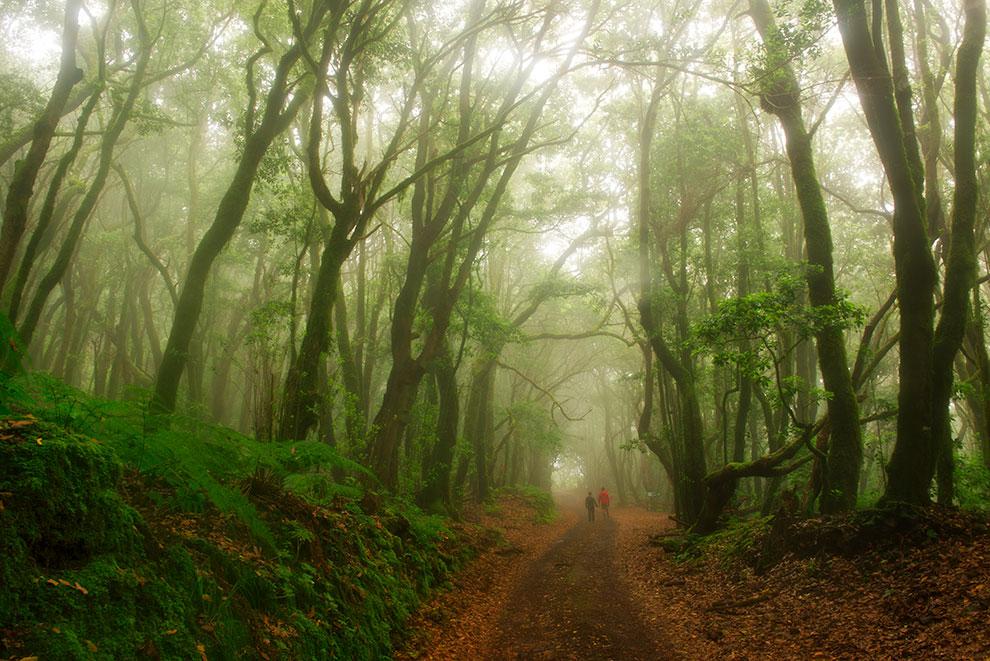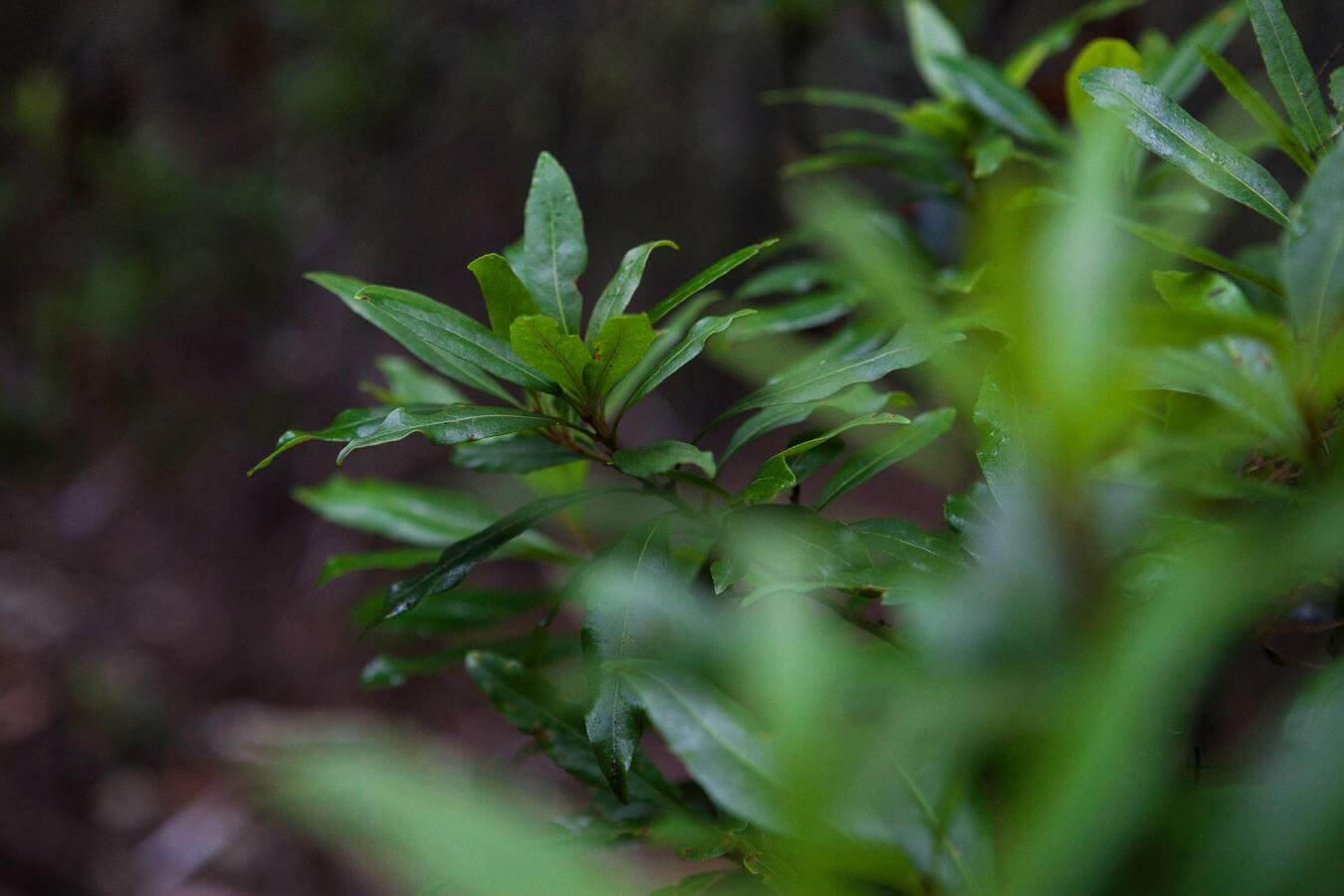
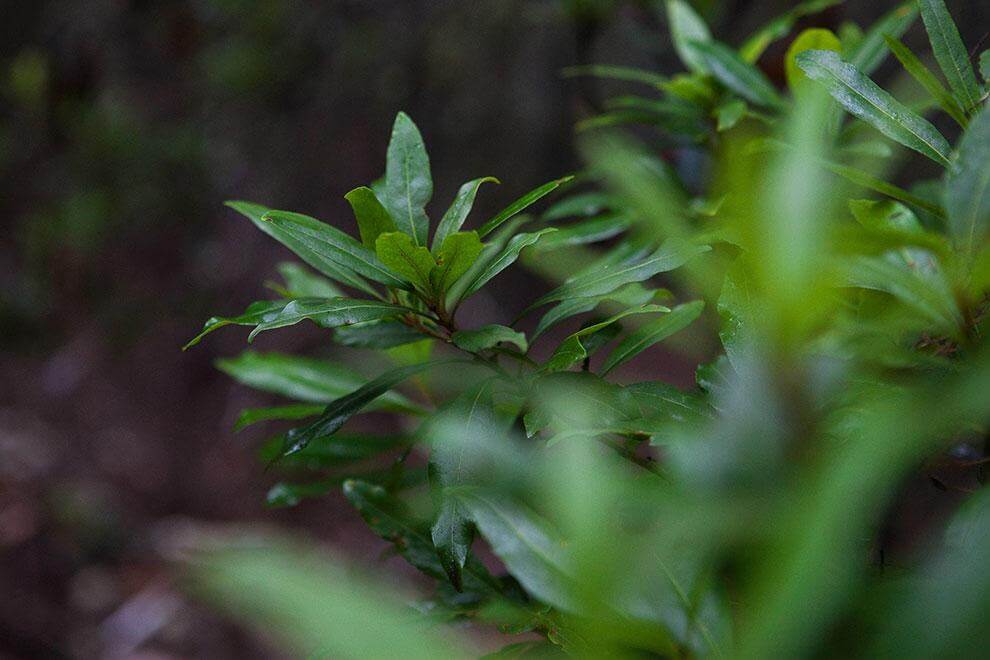

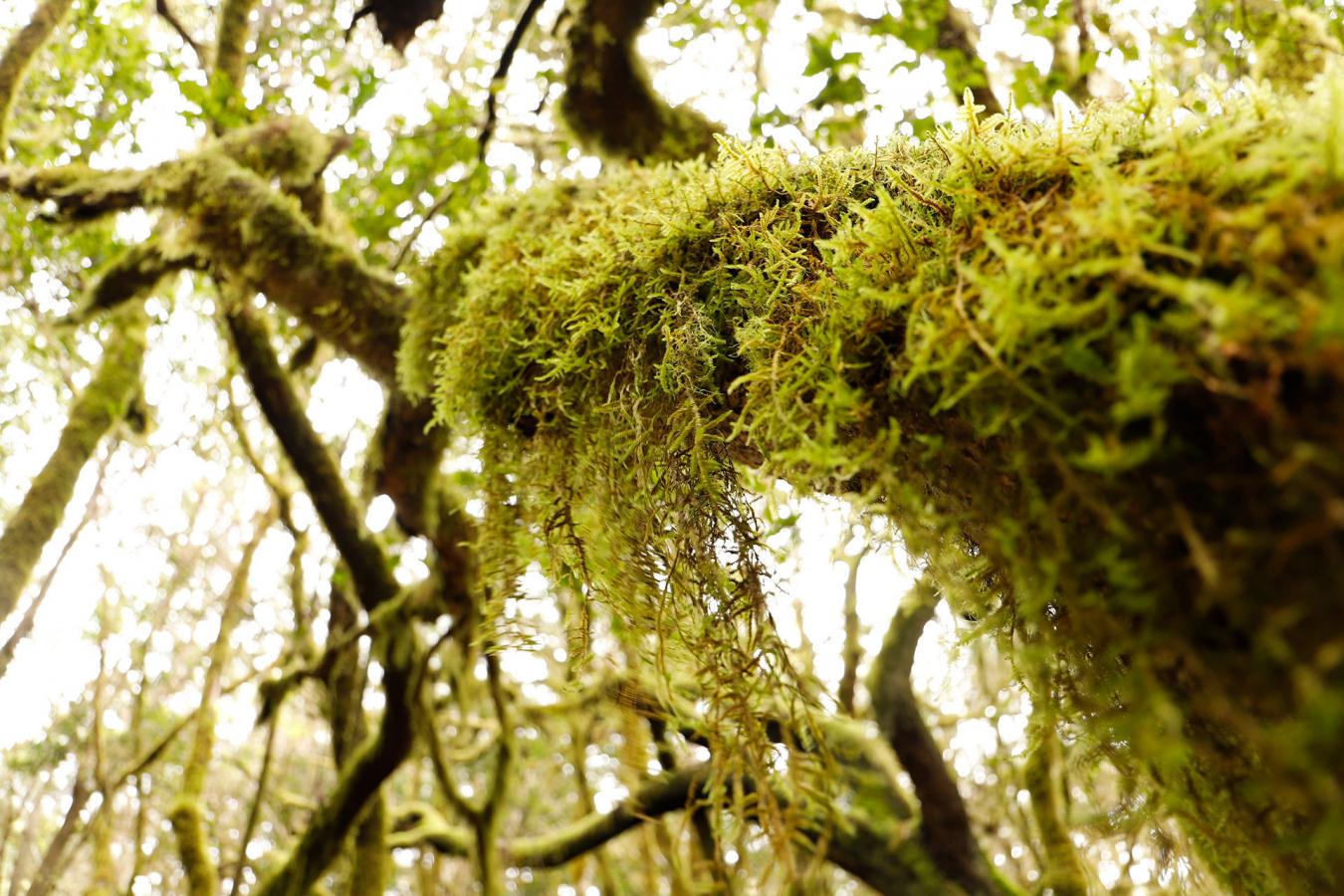
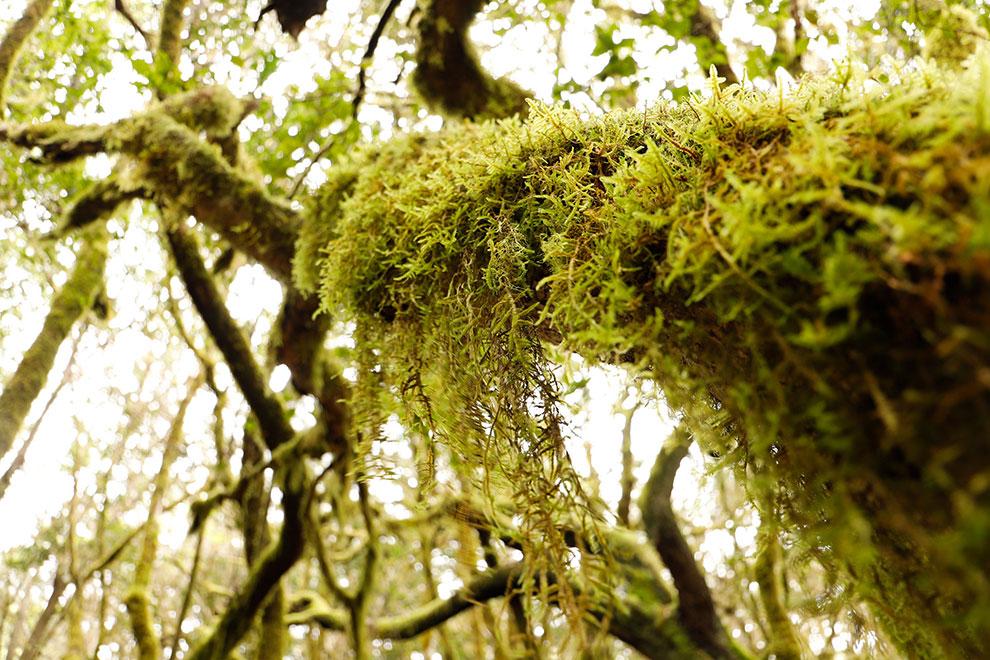

Entering Garajonay National Park inevitably makes you feel you are part of it, captivating you in every place you visit… not to mention if you go in autumn!
In autumn the forest echoes nature and begins to change. Dormant since the summer, it starts to wake up, donning different tones of green with the arrival of the rains. This setting is accompanied by the autumnal light, spreading a special gleam over every single nook and cranny, every lichen, every tree trunk, highlighting the colours of the park even more, if that were possible. With the first rains, fungi put in an appearance in this spectacle, contributing their variety of colours, breaking with the greenness that is so characteristic of Garajonay.
The laurissilva is a woodland formed by evergreen trees; you will not see a mass falling of leaves as with other species and latitudes. The leaves that carpet the paths, to the delight of hikers, are the remains of leaves that accumulate year after year, painting the ground with ochre and red hues at the same time as they enrich it with their organic material.

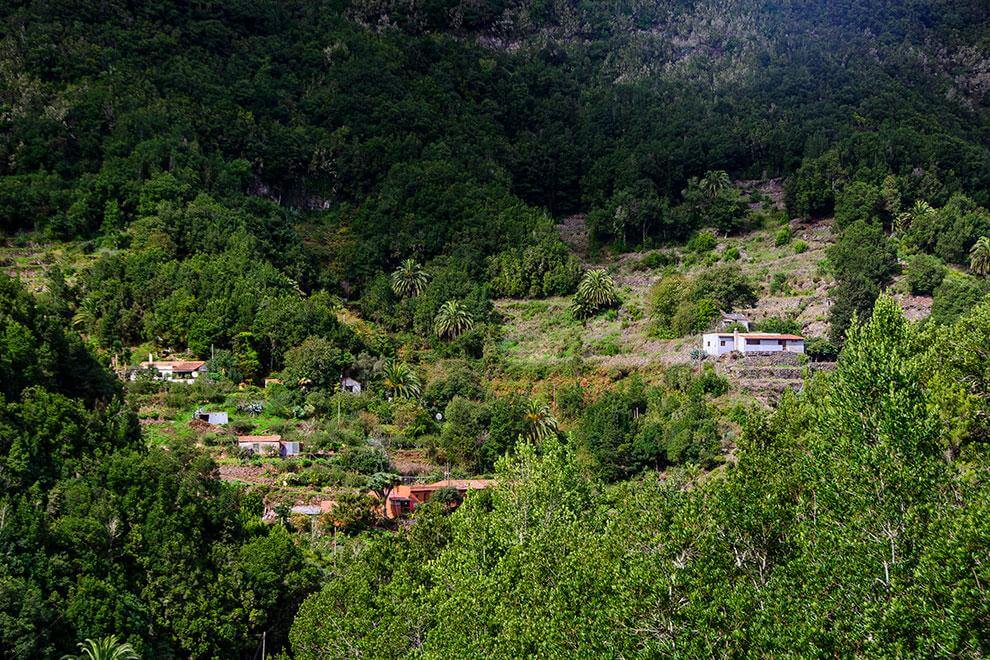

In the setting of the forest fog is never absent, appearing and disappearing in a dance carried by the breeze, bearing witness to the trade winds that predominate on the islands.
Travellers sometimes ask whether it is a good idea to walk around the park when there is fog or rain, and the answer is undoubtedly that it is not only recommendable, but essential! In particular, at this time of year, one can enjoy them on a walk through the park. They are responsible for the survival of this ancient forest and the island’s water supply. In the Canary Islands, there are hardly any permanent water courses running along the ravines. La Gomera is an exception. Just 300 kilometres away from the Sahara, the planet’s largest desert, 5 water courses flow in Garajonay all year long. The largest and most spectacular one is the stream of El Cedro. Hearing its crystal-clear water trickling through the woodland and refreshing us is easy. Routes 2, 8 and 9 of the National Park all lead us to this emblematic place, in the heart of Garajonay. Route 9 takes us from Contadero to the hamlet of El Cedro, passing by the chapel of Lourdes and its recreational area, where we can rest and refresh ourselves. This 6-kilometre trail with medium elevation differences ends at a natural waterfall which feeds the crops in the northern part of the island. Along the way you will be able to enjoy endemic trees of Garajonay such as the Canary avocado, the Canary Islands olive and the Canary laurel. The latter is the tree that lends its name to the laurissilva forest, and to recognise it, you have to observe its leaves: along the central nerve you should see some small glands, and if you can see its fruits, they are like tiny black olives. So now you can recognise the bay laurel!
The tales that delighted us as children always took place in a forest, with strange background noises, moss and lichen hanging from the branches, with the fog swirling around the main characters, and we could even imagine the smells. And what could be better than experiencing it now? Walking around the park in autumn will take you back to those childhood moments, you will see how a smile will accompany you throughout your hike, because you will once again feel that tingling sensation, like when you read or were told those stories as a child.
And what about the youngest members of the household? For them it is essential; their imagination gushes forth with these landscapes, every metre of woodland is the real setting that reflects the imagination. Tales of elves and fairies hidden amongst the fallen tree trunks, between the branches knotted with lichens, with the dancing fog swirling throughout the scene.
Yes, in autumn the Park is different, another children’s story, but this time one you can live out as a protagonist.
